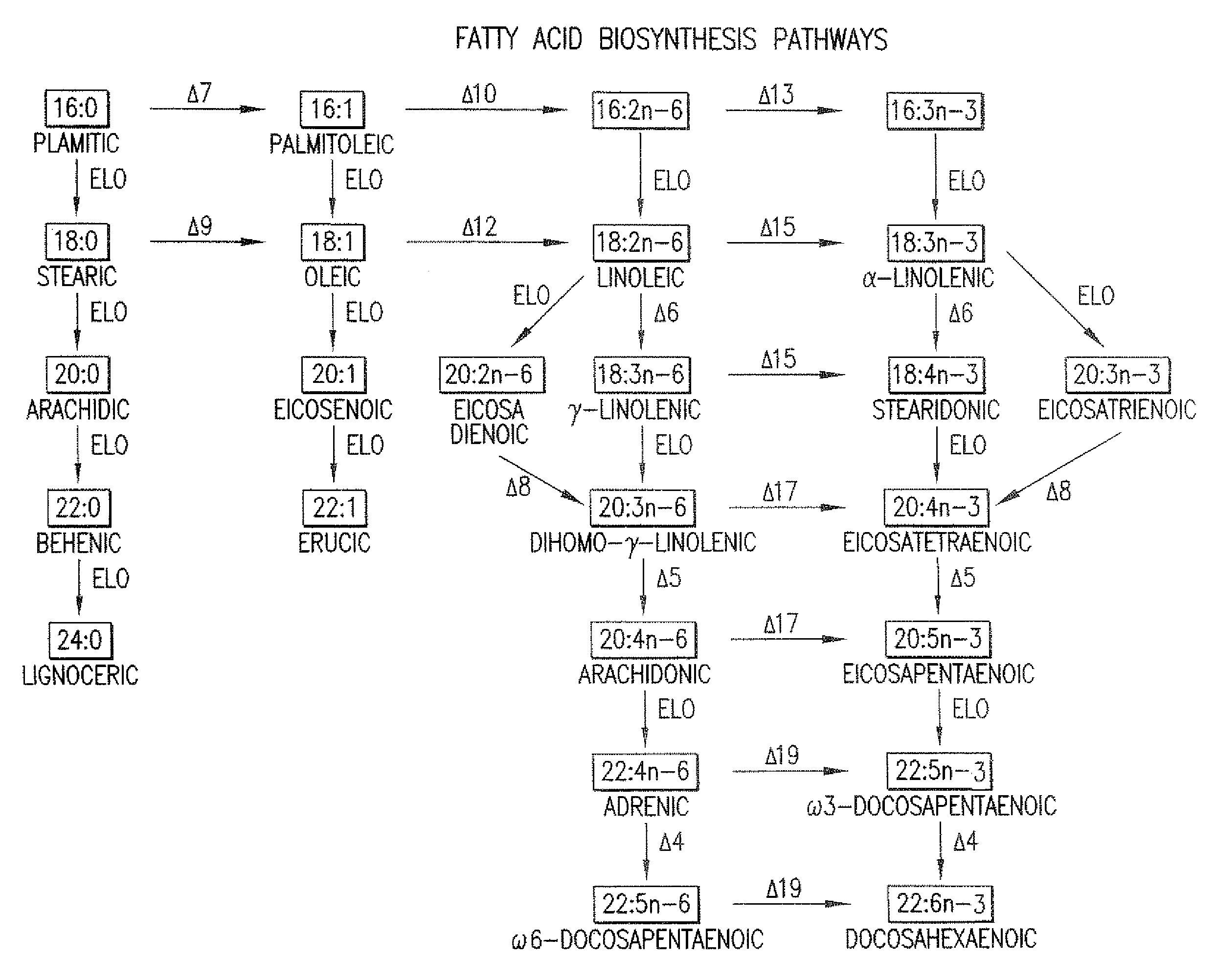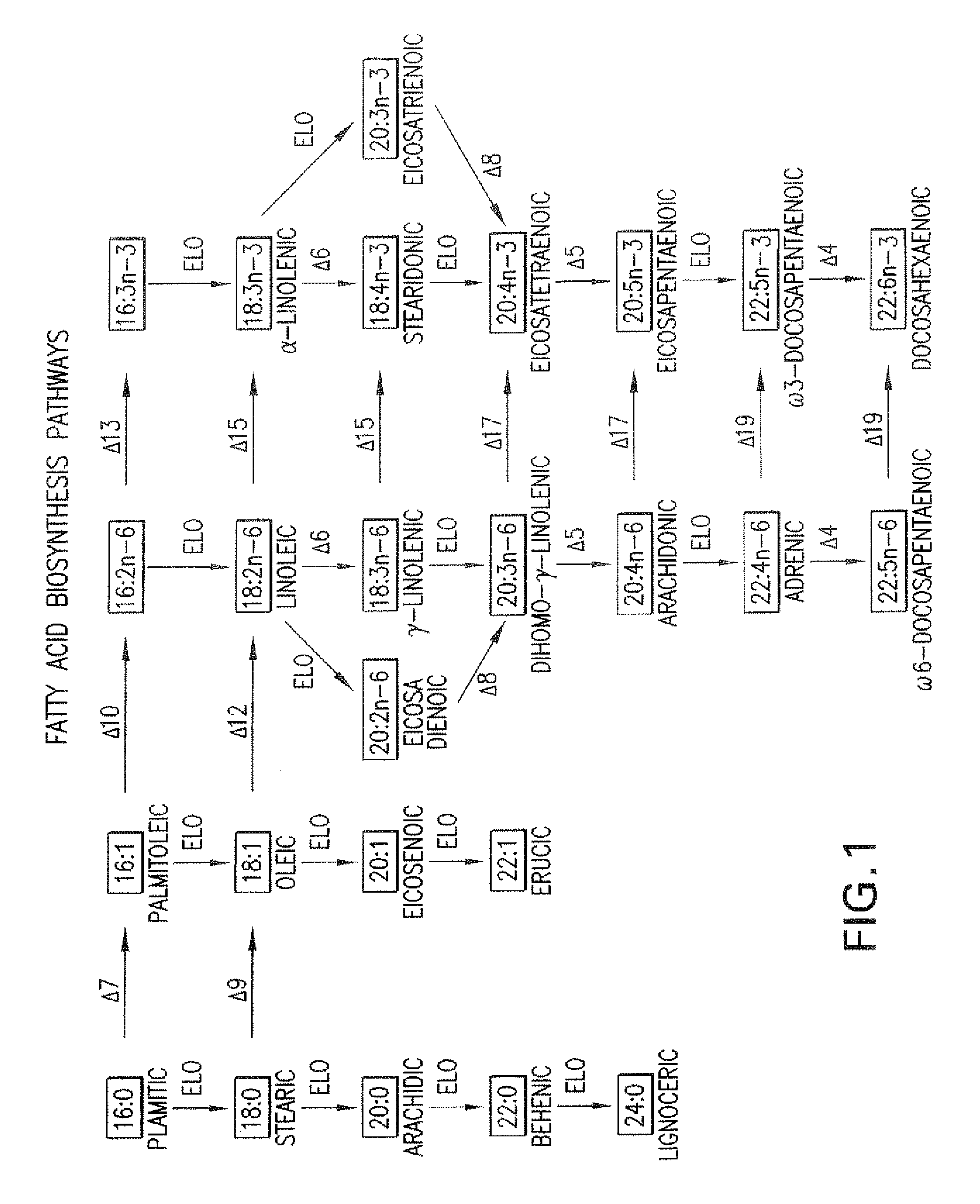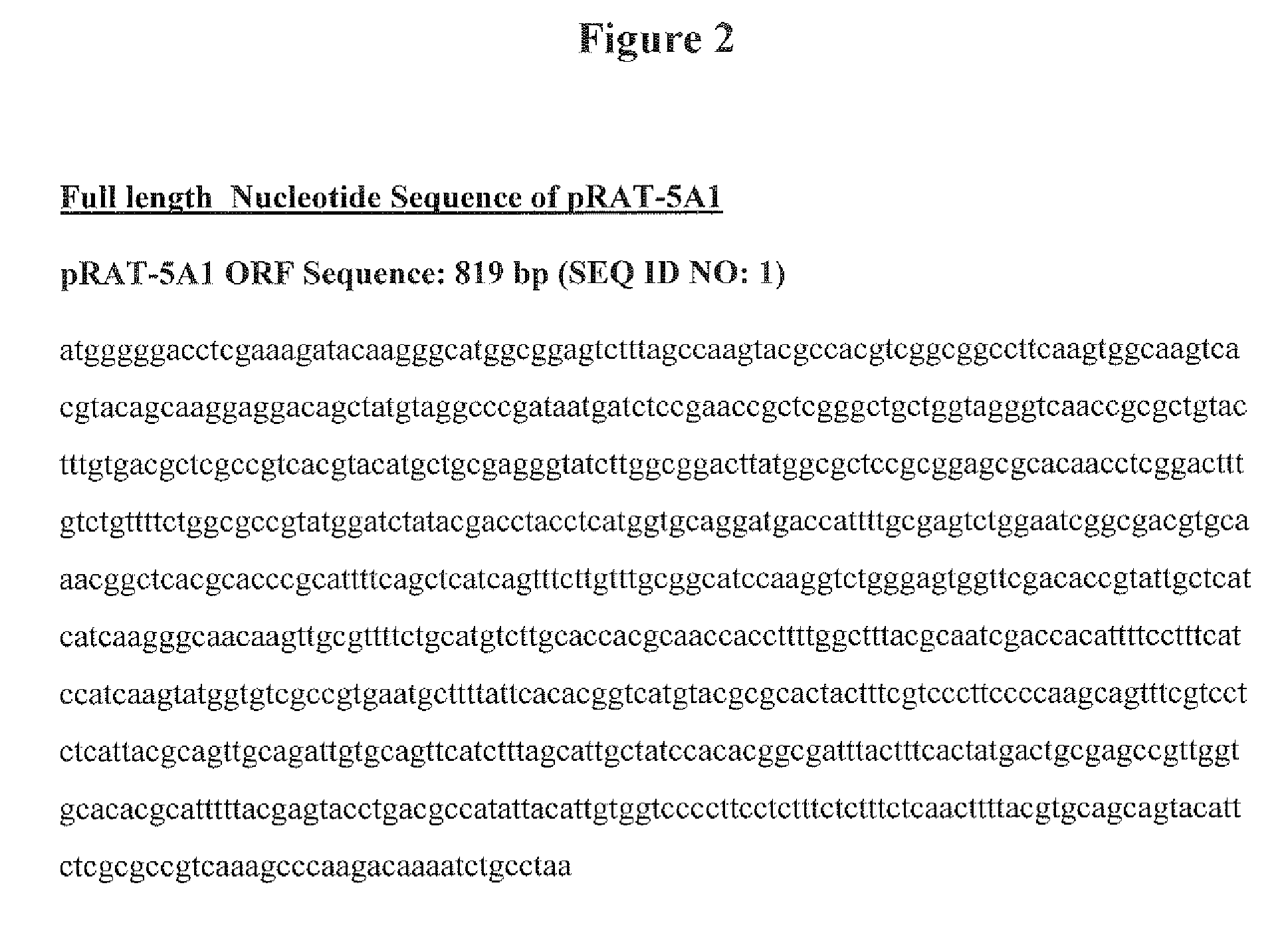Elongase Gene and Uses Thereof
a technology of elongase gene and gene, applied in the field of elongase gene, can solve the problems of substrate-specific step but also rate-limiting step
- Summary
- Abstract
- Description
- Claims
- Application Information
AI Technical Summary
Benefits of technology
Problems solved by technology
Method used
Image
Examples
example 1
Cloning of Full Length Elongase Like cDNA from Thraustochytrid sp. BICC 7087
[0137]A cDNA library was constructed at Incyte Corporation (Wilmington, Del.) from the fungus Thraustochytrid sp. BICC 7087 (BP0091). cDNA synthesis was initiated using an oligo (dT) primer containing EcoRI restriction site in the first strand synthesis reaction. Following the second strand synthesis, double stranded cDNA was blunted, ligated to NotI adapters, digested with NotI and EcoRI, size selected and cloned into the NotI (5′ of the cDNA insert) and EcoRI (3′ of the cDNA insert) sites of pBluescript (KS+) vector. The library ligation mix was diluted 10 fold and transformed into Escherichia coli DH10B competent cells according to Incyte's transformation protocol. The library was stored in glycerol stock after recovering the transformants. The titer appeared to be 1.14 millions primary clones / total ligation mix.
[0138]Around 5000 clones were then sequenced using T3 primer and the sequence was generated fr...
example 2
Expression of Thraustochytrid sp. BICC 7087 Elongase cDNA in Baker's Yeast
[0142]The construct pRAT-5A1 was transformed into Saccharomyces cerevisiae 334 (Hoveland et al., Gene. 1989; 83:57-64) and screened for elongase activity. Saccharomyces cerevisiae 334 containing pYX242 vector alone was used as a control. The cultures were grown for 48 hours at 24° C., in selective minimal media lacking leucine (Ausubel et al., Short Protocols in Molecular Biology. 1995. pp. 4.8-4.9), in the presence of 50 μM of LA, ALA or EPA. For LA and ALA elongation, EDA and ETrA respectively were the predicted elongated products showing Δ9-elongase activity. After 48 hours of incubation, cells were harvested by centrifugation. The cell pellet was washed once with sterile distilled / deionized water. Total yeast lipids were then extracted and the fatty acid analysis was performed as described in Knutzon et al. (J. Biol. Chem. 273:29360-29366 (1998)). Briefly, the rinsed cell pellet was extracted with 30 ml of...
example 3
Sequence Comparison Between pRAT-5A1 and Other Known Elongases
[0144]The sequence analysis package of Vector NTI Suite 9 (Invitrogen Corporation, Carlsbad, Calif.) was used to compare the pRAT-5A1 with known protein sequences. The nucleotide sequence of pRAT-5A1 open reading frame was first translated into amino acid sequence. This amino acid sequence of pRAT-5A1 was then used in the sequence homology comparison with other published Δ9-elongase sequence from different organisms. Sequence alignment was performed using Vector NTI software and the percentile of positive alignment was determined. The amino acid sequence of pRAT-5A1 had 32.0% identity with Danio rerio Δ9-elongase (FIG. 7), 33.9% with Isochrysis galbana Δ9-elongase (FIG. 8) and 35.4% with Pavlova salina Δ9-elongase (FIG. 9). The functional activity of all these Δ9-elongases have been established and published. The amino acid sequence of pRAT-5A1 was also used for performing BLAST searches on the NCBI-Genbank database to de...
PUM
| Property | Measurement | Unit |
|---|---|---|
| weight percent | aaaaa | aaaaa |
| weight percent | aaaaa | aaaaa |
| volume | aaaaa | aaaaa |
Abstract
Description
Claims
Application Information
 Login to View More
Login to View More - R&D
- Intellectual Property
- Life Sciences
- Materials
- Tech Scout
- Unparalleled Data Quality
- Higher Quality Content
- 60% Fewer Hallucinations
Browse by: Latest US Patents, China's latest patents, Technical Efficacy Thesaurus, Application Domain, Technology Topic, Popular Technical Reports.
© 2025 PatSnap. All rights reserved.Legal|Privacy policy|Modern Slavery Act Transparency Statement|Sitemap|About US| Contact US: help@patsnap.com



